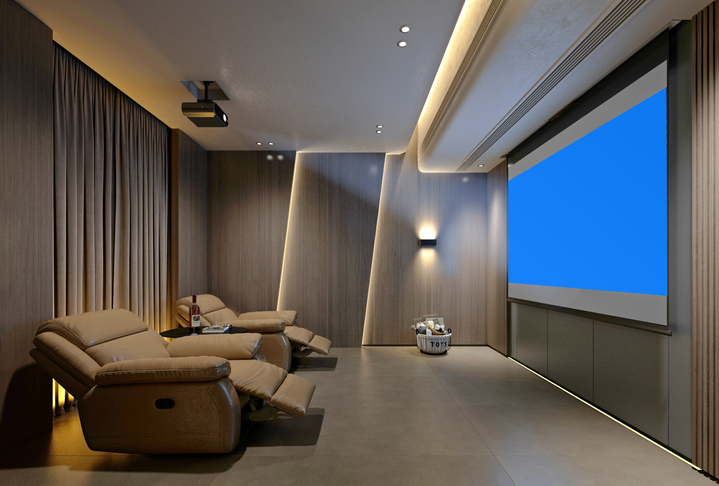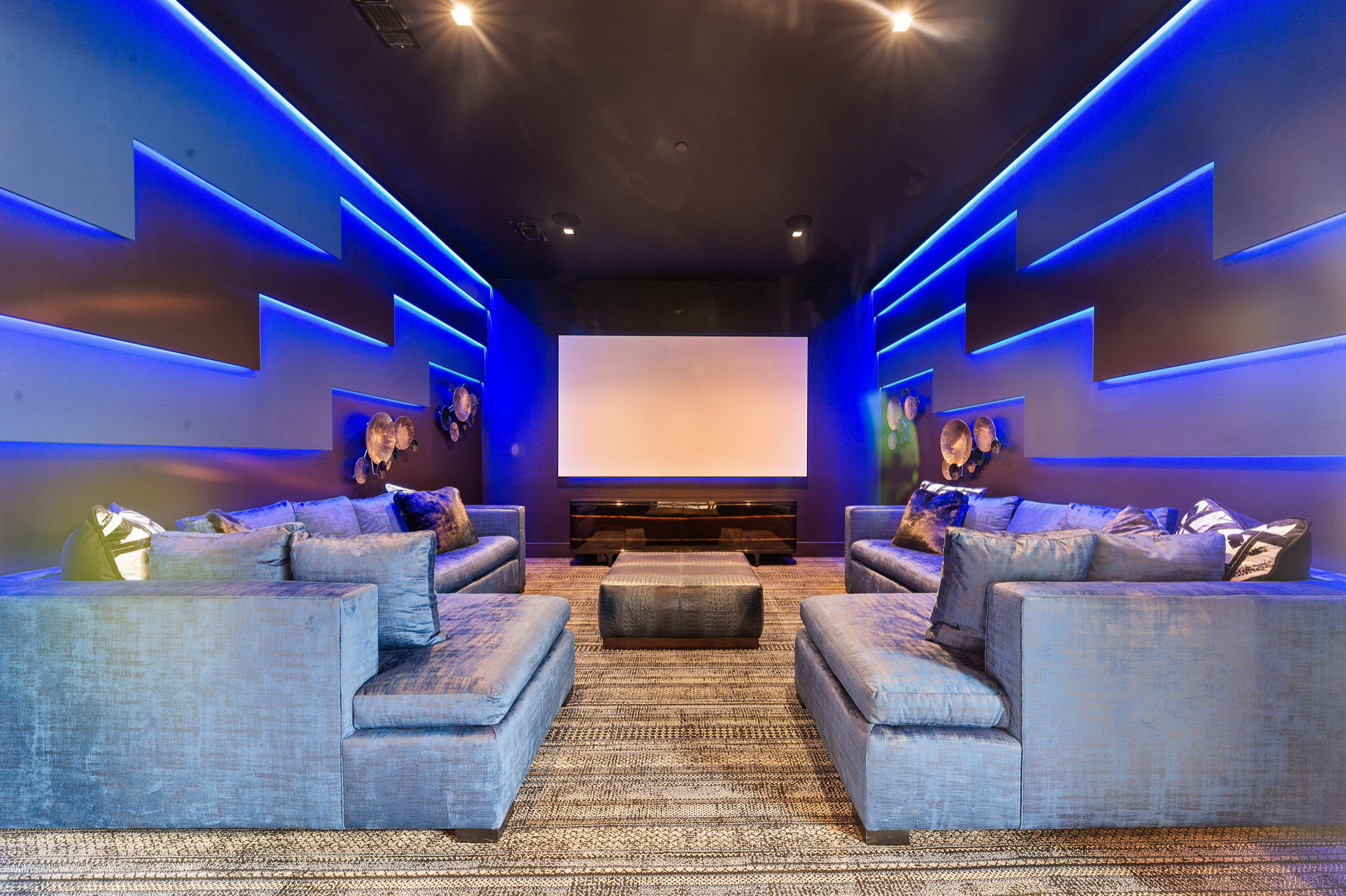Home Theater 101: Whatever You Required to Know for a Cinematic Experience in your home
Producing a home cinema that matches the cinematic experience of a commercial theater includes mindful consideration of numerous components, consisting of screen choice, sound systems, and space layout. Each component plays a critical role in accomplishing the desired setting and capability. Whether you are contemplating the ideal display dimension or the ins and outs of border noise, understanding these fundamentals is important. As we discover these important parts, it becomes evident that the options made can substantially impact your total watching experience, leaving one to contemplate just how these decisions will shape your personal movie theater.
Selecting the Right Screen
When establishing a home cinema, picking the right screen can make or break the viewing experience - home theater design tampa. The display acts as the centerpiece of your setup, affecting image high quality, checking out angles, and overall aesthetic. Trick elements to take into consideration consist of screen type, dimension, and resolution
First, figure out the proper display dimension based upon your room dimensions and seating distance. A general guideline is to sit about 1.5 to 2.5 times the angled display size for ideal viewing. Next off, pick between different screen kinds, such as fixed-frame, motorized, or retracting displays, each offering distinctive benefits. Fixed-frame displays commonly give the very best image top quality, while motorized alternatives enable flexibility in space use.
Resolution is one more critical variable. For an absolutely immersive experience, take into consideration a screen created for 4K or even 8K content, making sure intensity and quality. Additionally, take into consideration the display's gain, which impacts illumination and comparison; a higher gain can enhance brightness in well-lit areas, while a reduced gain may be preferable for darker settings.
Selecting Sound Equipment
Audio devices is a vital component of any type of home cinema system, dramatically boosting the general watching experience. The option of audio equipment can figure out the deepness, quality, and immersion of audio, critical for creating a motion picture atmosphere.
When selecting audio equipment, think about a border stereo, which typically consists of a receiver, multiple speakers, and a subwoofer. A 5.1 or 7.1 channel system is recommended, where the first number stands for the audio speakers and the second the speaker, giving an immersive soundscape. The receiver is the heart of the system, managing audio and video signals, and should support modern-day layouts like Dolby Atmos for a boosted spatial experience.
Quality audio speakers are crucial; look for designs that use a balanced audio profile with great bass action. Floor-standing audio speakers can generate richer audio, while shelf choices conserve space. In addition, take into consideration wireless choices for ease of installation, although wired systems frequently provide remarkable performance.

Optimal Seating Arrangements
Creating an ideal home cinema experience hinges significantly on optimum seating setups. The setup of seats plays a critical duty in both comfort and seeing high quality, straight impacting the overall motion picture experience.
First, take into consideration the screen dimension and viewing range. An usual standard is to place seats at a range around 1.5 to 2.5 times the diagonal size of the display. This guarantees an immersive experience without stressing the eyes.
Next, elevation is critical. If your seating remains in a tiered layout, the back rows must be more than the front to avoid obstructions. For flat seating, ensure that the front row is not also close to the screen, and that everyone has a clear view.
In addition, consider the setup in regards to social dynamics. Team seats can enhance the public experience, while individual seats may be liked for personal watching.

Finally, focus on comfort with ergonomic seating that supports extended viewing durations. Integrating recliner chairs or cushioned seats can substantially enhance the experience, making the home theater a favored destination for both enjoyment and leisure.
Lighting and Ambiance
Reliable lighting and ambiance are essential parts of a properly designed home theater, as they significantly influence the checking out experience. The ideal lighting can enhance the motion picture feeling, while bad choices can interfere with it. For optimum results, think about a layered illumination approach that consists of ambient, job, and accent illumination.
Ambient illumination offers general lighting, making certain that the room is not totally dark, which can stress the eyes. Dimmer switches are very suggested, permitting for adjustments based on the content being viewed. Task lighting, such as wall sconces or floor lights, offers functional illumination for link tasks like analysis or navigating the room without interfering with the total atmosphere.
Accent lights can be made use of to highlight building functions or create prime focus, adding deepness and interest to the area. LED strip lights behind displays or along racks can offer a refined glow that improves the visual experience without overwhelming the viewer.

Wiring and Installation Tips
A tactical electrical wiring setup is essential for accomplishing optimal efficiency in your house movie theater system. Correct circuitry not only makes sure high-grade audio and video signals yet also improves the general visual of your room. Begin by drawing up your format, determining where each component will certainly be put, including your display, speakers, and receiver.
When choosing wires, prioritize high-quality, appropriately evaluated electrical wiring to lower signal loss. HDMI cords must be made use of for video clip connections, while speaker wire should match the requirements of your audio speakers and amplifier. Opt for in-wall rated cable televisions to comply with safety requirements and preserve a tidy look.

Verdict
In recap, producing a remarkable home theater experience requires mindful factor to consider of numerous components, consisting of screen selection, audio equipment, seating arrangements, check this lighting, and electrical wiring. By focusing on these factors, a motion picture atmosphere can be efficiently replicated, permitting for immersive viewing experiences that measure up to traditional cinema settings.
Developing a home theater that rivals the cinematic experience of a commercial theater includes cautious consideration of multiple parts, consisting of screen option, audio systems, and area design.When setting up a home theater, choosing the right display can make or original site break the viewing experience. Next off, pick in between various screen types, such as fixed-frame, mechanized, or retracting screens, each offering distinct benefits. For an absolutely immersive experience, consider a screen created for 4K or also 8K content, making sure sharpness and clarity.In summary, developing an exceptional home theater experience needs mindful consideration of different elements, including screen option, audio devices, seating setups, lights, and electrical wiring.
Comments on “Why Tampa Home Theater Installation Is a Game-Changer for Your Home Setup”